By: Madeline Moss
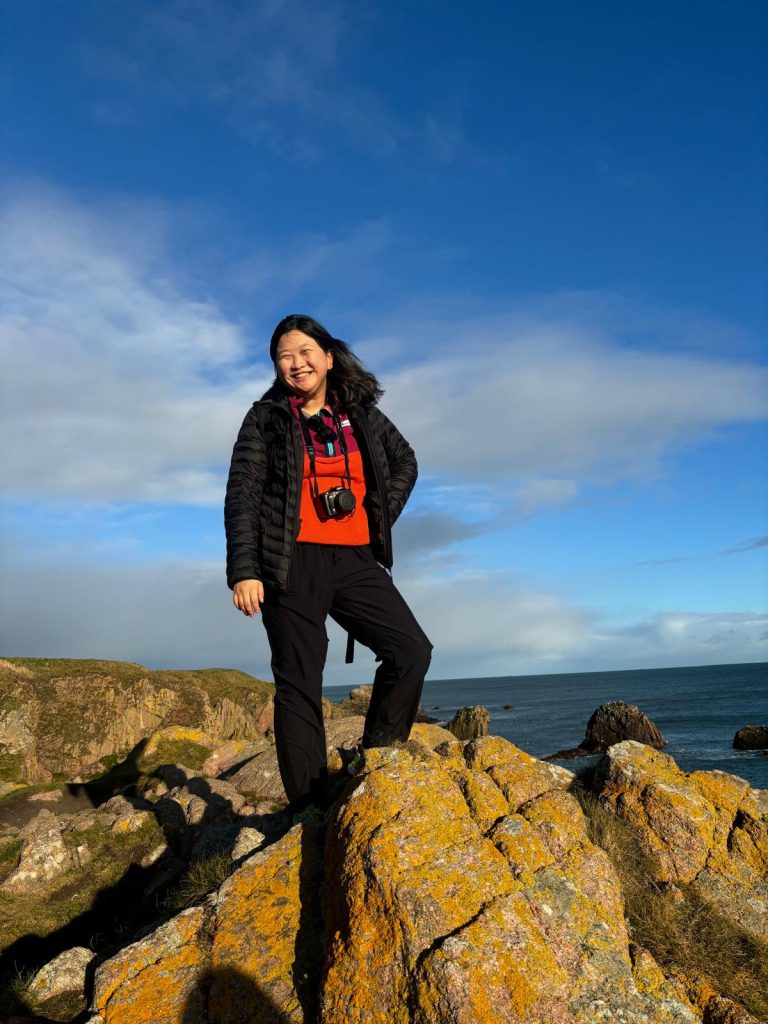
Studying abroad in Aberdeen, Scotland was truly a transformative experience. Unlike other programs, Aberdeen lacks many of the language and cultural barriers that others present, so I found myself more deeply immersed in Scottish life.
The University of Aberdeen’s “Go Abroad” team played a crucial role in my study abroad experience as their support was invaluable to this transition. They sent numerous pre-departure emails and helped to navigate student visas, class registration, and orientation. I found the team to be very friendly and approachable. They had open hours throughout orientation and welcome week, which was helpful when bumps in the road inevitably came up.
As for living in Aberdeen, I lived in the Hillhead Student Village, which was about a 20-minute walk from King’s College (the main part of campus) and 40 minutes from the city centre. I lived in the Hector Boece Court with four other female study-abroad students, and it felt like our cozy apartment. Each of us had a private room while sharing two bathrooms, a living room, and a kitchen. I really appreciated having our own kitchen, but I wish we didn’t have to provide our own kitchen essentials such as plates, silverware, and pots, only to donate or discard them at the end of the semester. Despite the inconvenience of buying basic kitchen supplies, I enjoyed the accommodations overall, as there were plenty of students living there, and I was close to my friends.
Hillhead is conveniently located a short 10-minute walk to Lidl, a grocery store similar to Aldi, where products are displayed in their original boxes they are shipped in–helping to cut down on labor costs, getting passed down to customers. Lidl is quite affordable compared to other grocery stores in Scotland and significantly cheaper than grocery prices in the United States, likely because the UK produces much of its fresh produce. I loved going to Lidl and I would often run into my friends at the grocery store, which was always fun. For specialty foods or to have a wider selection, I would take the bus to walk to Morrison’s which reminded me of Meijer.
Additionally, Hillhead has a bus stop located right by the reception building, with buses arriving about every 30 minutes to take students to campus or into the city centre. Plus, the University provided a free bus service, the 9U line, which ran directly between Hillhead and campus. Regular bus fares ranged from £2 to £4 one way, but students could purchase daily, weekly, or monthly passes for convenience. However, I found Aberdeen to be very walkable and exploring by foot allowed me to get to know the city.
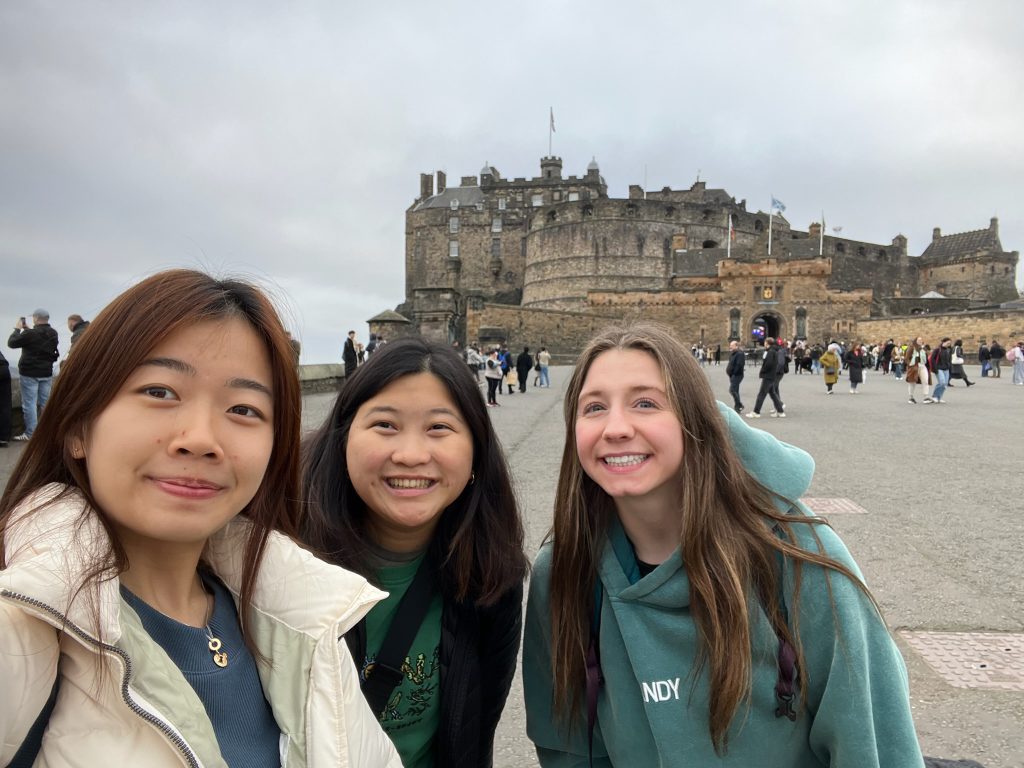
The weather in Aberdeen was a little bit cooler than a typical fall in Kalamazoo but still very pleasant. Be sure to pack rain boots and an umbrella or rain jacket, as the rain can either be a light drizzle or a heavy downpour! I found that it did not rain as much as I expected considering how close I was to the North Sea! During my time there, I experienced one snowfall, which was unusually early in the season, as it generally snows from January to March. Aside from that brief cold spell, I found that a warm jacket and scarf were enough to keep me comfortable. The weather was sunnier than I expected, though quite dreary on some days. On those colder days, I recommend visiting one of the three local coffee shops on campus––Kilau, Foodstory, or Shelter Coffee–or heading into the city centre for a coffee or tea. Some great spots are Bandit Bakery, Books and Beans, Mount, The Cult of Coffee, and Grub Fresh Food.
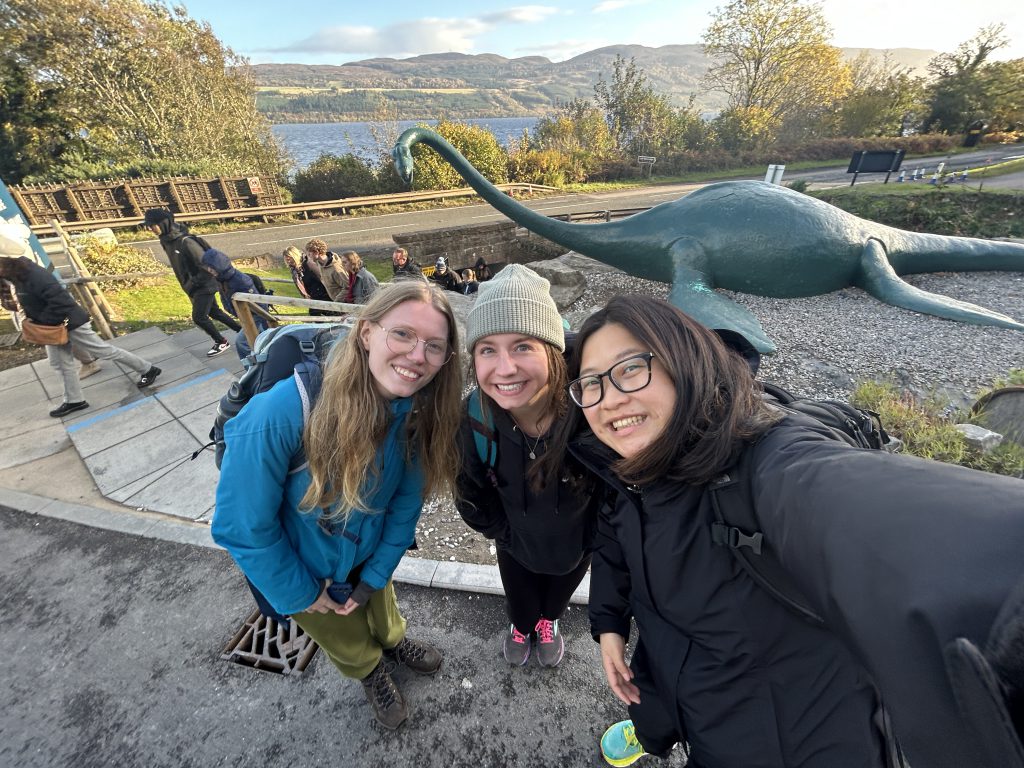
The academic structure at the University of Aberdeen is unique, emphasizing independent study over in-class time. UoA students typically take 45-60 credits per semester, but to fulfill Kalamazoo College’s requirements, students must take 75-90 credits. My courses included a second-year sociology class, Introduction to Criminology, a second-year English class, Encounters with Shakespeare, and a third-year English course, Romanticism. I found all three of my courses to be engaging, though the reading load was heavier than anticipated––still less than at Kalamazoo but substantial. One thing I do want to note is that the grading system in the UK is different to the US. They typically rely on only a few bigger projects to make up your grade. For example, in my Romanticism course, I only had four grades in the gradebook, with a 3000-word essay making up 50% of my grade. While I appreciated not having numerous smaller tasks or projects scattered throughout the semester, this structure placed pressure on me towards the end, as a single essay could significantly impact my final grade. That said, I found the University’s grading system and rubric to be clearer and more straightforward compared to Kalamazoo’s. On top of that, I noticed that the course coordinators (professors) tended to be more generous with their grading and feedback.
UoA had four primary teaching styles:
Lectures: traditional sessions where the course coordinator would present a slideshow and students would take notes.
Tutorials: Smaller and interactive additional class time to lectures, where participation was graded (usually 10% of your overall course grade), often led by a different course coordinator than who leads lectures.
Seminars: They are basically the same as tutorials but are for the higher-level courses. Typically, they run for longer and are more discussion-based and hands on. The participation aspect and expectations reminded me of a 300-level course at Kalamazoo.
Labs: I spoke with another Kalamazoo College student, a chemistry major who took a pharmacy class about her experience in the labs. She mentioned that the labs at UoA were larger and more modernized. The lab sessions lasted three hours or less and they were not weekly like at K, but rather only held a few times throughout the semester. One thing she did note was that students did have to purchase their own lab coat and goggles for the duration of the course.
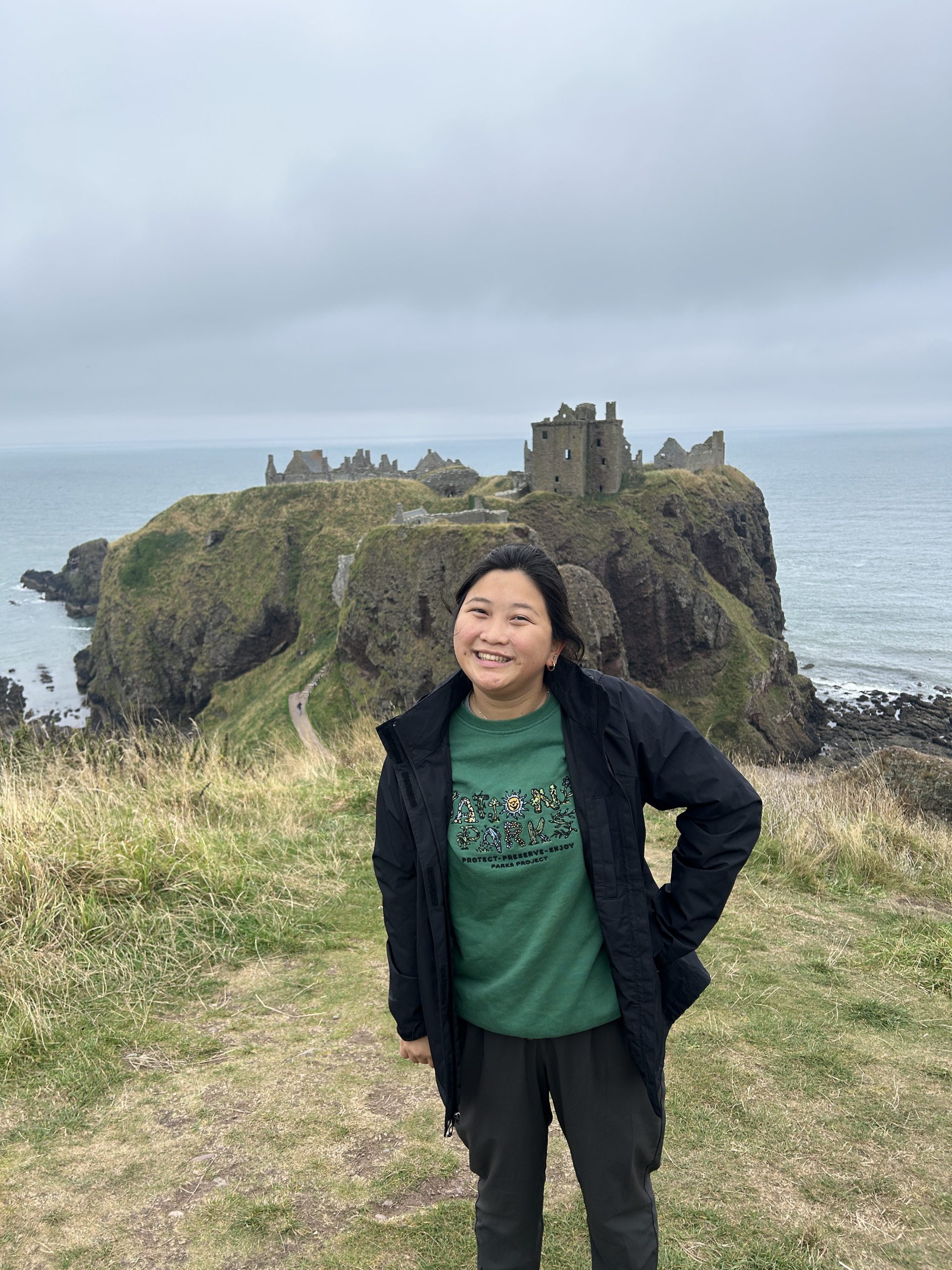
Beyond academics, UoA boasts a diverse student body, with people from all over the world, creating a vibrant and welcoming community. The University offers over 200 clubs, and I joined the hiking club, book club, and international student club. It’s worth nothing that there is a small fee to join clubs, usually less than £10. From cold-water plunges in the North Sea to underwater hockey, the variety of clubs offered was amazing!
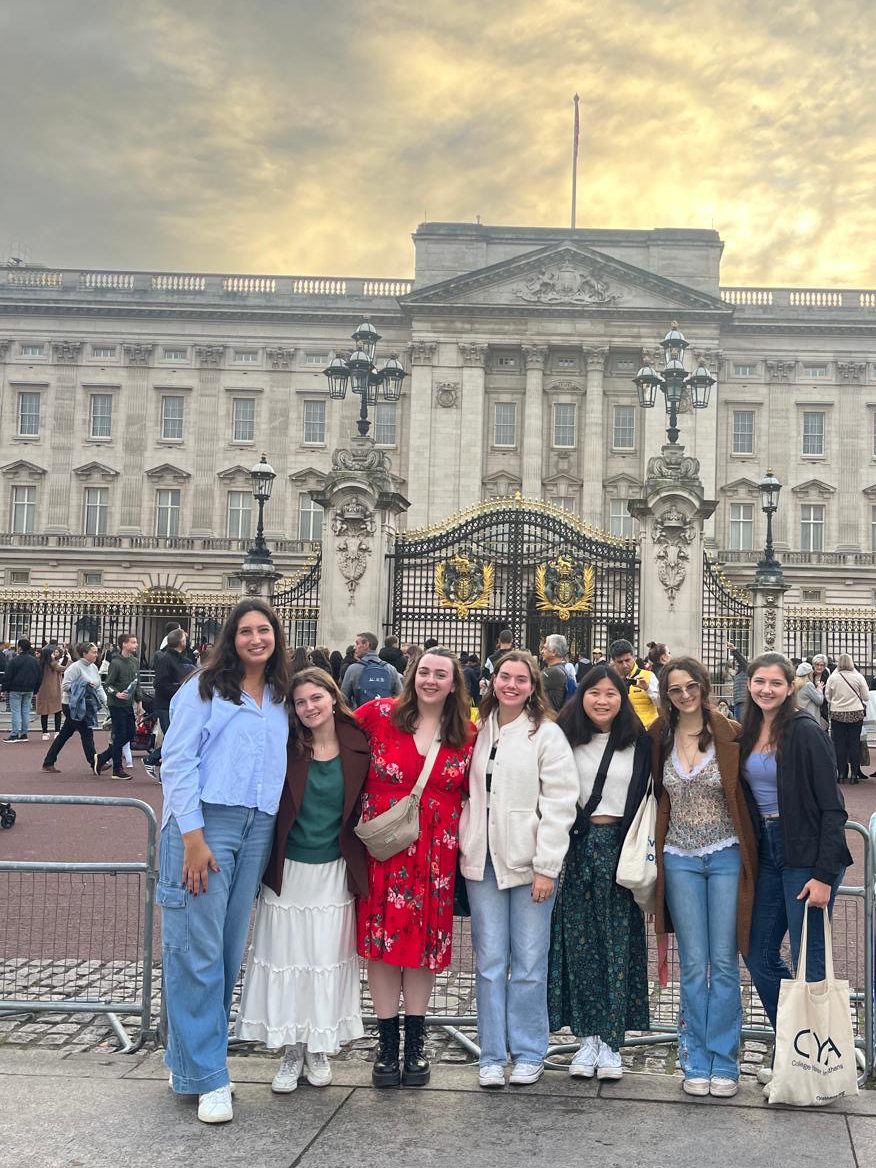
Traveling outside of Aberdeen was fairly convenient. Union Square, located in the city centre had a bus depot and a train station, which were easily accessible. Scotland’s natural beauty and historical landmarks were definite highlights of my experience. Weekend trips to places like Stonehaven, Slains and Dunnotar Castles, Loch Ness, and the Scottish Highlands were breathtaking. I also explored cities across Scotland, including Edinburgh, Glasgow, St. Andrews, and Dundee. Beyond Scotland, I traveled to London, Amsterdam, and Berlin. Traveling within the UK and Europe was generally straightforward. While I didn’t find the extremely cheap flights to Europe that other cities offer, due to Aberdeen’s more remote location, I could still fly easily thanks to the small airport located about an hour’s bus ride from Hillhead.
Overall, I loved studying abroad in Aberdeen, Scotland as the culture was vibrant and the people were incredibly friendly and helpful, making me feel at home. I loved the classes I took as they were courses not offered at K. The different teaching styles pushed me to approach learning in a different light, with more emphasis on independent outside-of-class work. I met so many new people and made friends with people from around the world. Aberdeen is a fantastic program for students looking for an English-speaking program at a larger university with excellent cultural and travel opportunities.

Leave a Reply